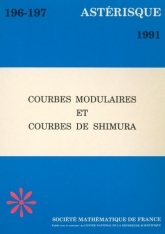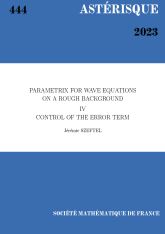
- Année : 1991
- Tome : 196-197
- Format : Électronique, Papier
- Langue de l'ouvrage :
Français - Nb. de pages : 274
- ISSN : 0303-1179
- DOI : 10.24033/ast.70
Ce livre a pour origine un Séminaire tenu à Orsay sur l'article de K. Ribet “On modular representations of $\mathrm {Gal}(\overline {\mathbf {Q}}/\mathbf {Q})$ arising from modular forms”, qui démontre notamment que la conjecture de Taniyama-Weil implique celle de Fermat. Le résultat de Ribet repose sur la comparaison de l'action des opérateurs de Hecke sur les modèles de Néron des jacobiennes des courbes modulaires et des courbes de Shimura. Sont regroupés ici 3 articles exposant les résultats utilisés : jacobienne des courbes modulaires et opérateurs de Hecke, réalisation $l$-adique de l'accouplement de monodromie, démonstration des résultats de Drinfeld et Čerednik sur l'uniformisation $p$-adique des courbes de Shimura. Les quatre autres articles poussent l'étude plus avant et offrent des résultats nouveaux sur l'action de $\mathrm {Gal}(\overline {\mathbf {Q}}/\mathbf {Q})$ sur les jacobiennes (ou la cohomologie) des courbes modulaires. L'ensemble offre un panorama des connaissances actuelles sur l'arithmétique des courbes modulaires et des courbes de Shimura.

